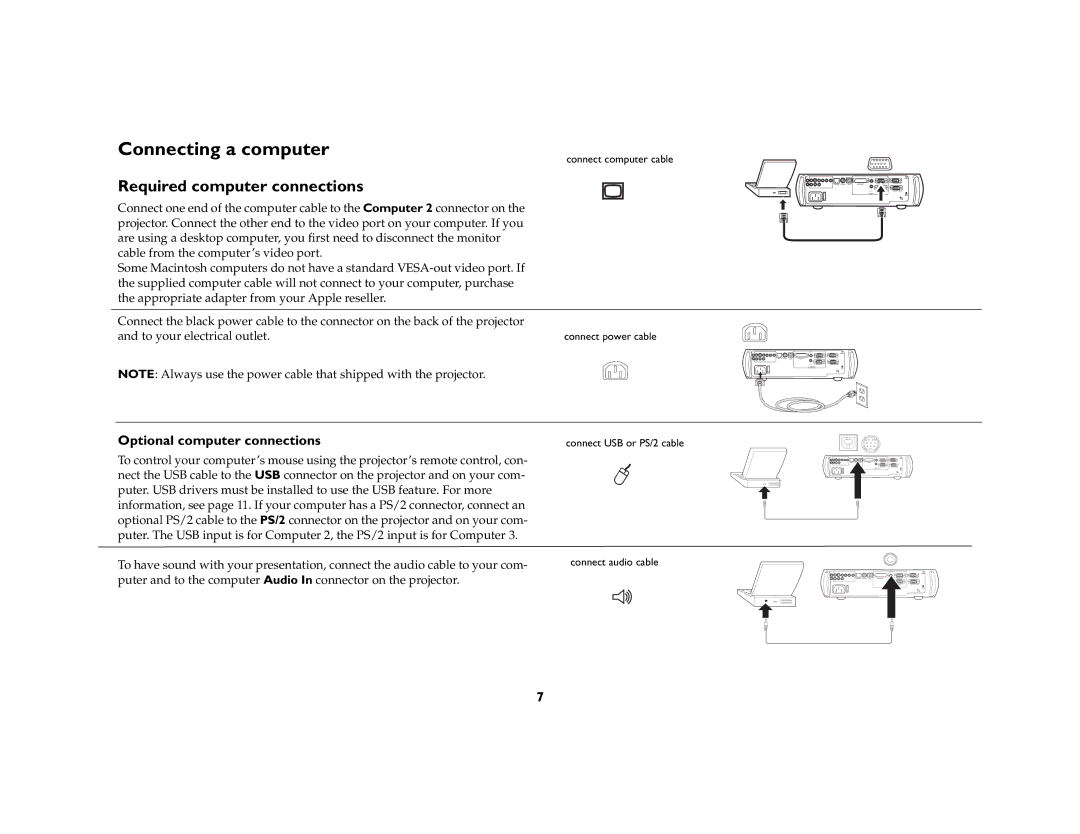
Connecting a computer
| connect computer cable |
Required computer connections | I |
| O |
Connect one end of the computer cable to the Computer 2 connector on the |
|
projector. Connect the other end to the video port on your computer. If you |
|
are using a desktop computer, you first need to disconnect the monitor |
|
cable from the computer’s video port. |
|
Some Macintosh computers do not have a standard |
|
the supplied computer cable will not connect to your computer, purchase |
|
the appropriate adapter from your Apple reseller. |
|
Connect the black power cable to the connector on the back of the projector |
|
and to your electrical outlet. | connect power cable |
trigger
network mouse USB | computer 1 | computer 2 | monitor out |
|
| computer 3 | serial control |
|
| computer in |
|
NOTE: Always use the power cable that shipped with the projector.
I O
trigger
network mouse USB | computer 1 | computer 2 | monitor out |
|
| computer 3 | serial control |
|
| computer in |
|
Optional computer connections
connect USB or PS/2 cable
To control your computer’s mouse using the projector’s remote control, con- nect the USB cable to the USB connector on the projector and on your com- puter. USB drivers must be installed to use the USB feature. For more information, see page 11. If your computer has a PS/2 connector, connect an optional PS/2 cable to the PS/2 connector on the projector and on your com- puter. The USB input is for Computer 2, the PS/2 input is for Computer 3.
To have sound with your presentation, connect the audio cable to your com- | connect audio cable |
puter and to the computer Audio In connector on the projector. |
|
I O
trigger
network mouse USB | computer 1 | computer 2 | monitor out |
|
| computer 3 | serial control |
|
| computer in |
|
7
